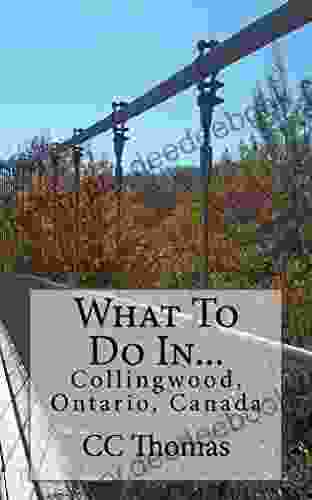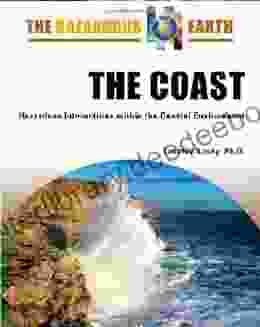The Coast: Hazardous Interactions Within The Coastal Environment (Hazardous Earth)

The coastal environment, a dynamic interface between land and sea, plays a pivotal role in shaping our planet's ecology and supporting human civilization. However, this vibrant ecosystem is not without its perils, as it harbors a myriad of hazardous interactions that threaten its health and the wellbeing of those who depend on it. In this comprehensive article, we delve into the intricacies of these interactions, exploring their causes, consequences, and potential solutions. From the insidious effects of pollution to the devastating force of natural disasters, we uncover the hidden dangers lurking within our coastal realm.
Pollution: A Silent Invader
Anthropogenic activities, such as industrial discharge, agricultural runoff, and littering, have unleashed a torrent of contaminants into our coastal waters. These pollutants, including heavy metals, microplastics, and pathogens, disrupt marine ecosystems and pose significant health risks to both humans and wildlife.
Microplastics: These tiny fragments of plastic, less than 5mm in size, are ubiquitous in our oceans. They accumulate in the food chain and can leach toxic chemicals into marine organisms, leading to developmental abnormalities, reduced survival, and impaired reproduction.
4.7 out of 5
| Language | : | English |
| File size | : | 3926 KB |
| Text-to-Speech | : | Enabled |
| Screen Reader | : | Supported |
| Word Wise | : | Enabled |
| Print length | : | 155 pages |
| X-Ray for textbooks | : | Enabled |
Heavy metals: Industrial activities release heavy metals, such as lead, mercury, and cadmium, into the environment. These metals accumulate in marine sediments and can bioaccumulate in marine organisms. Exposure to heavy metals can result in developmental disorders, neurological damage, and reproductive impairment in humans and wildlife.
Pathogens: Coastal waters can become contaminated with fecal bacteria and viruses from sewage discharge and agricultural runoff. These pathogens can cause gastrointestinal illnesses, skin infections, and respiratory problems in humans. They also pose a risk to marine animals, particularly shellfish, which can accumulate pathogens in their tissues.
Natural Hazards: Unpredictable and Unforgiving
Coastal areas are particularly vulnerable to a range of natural hazards, including storms, floods, tsunamis, and sea-level rise. These events can cause widespread destruction, loss of life, and economic devastation.
Storms: Coastal storms, such as hurricanes and cyclones, bring high winds, storm surges, and heavy rainfall. These storms can cause flooding, erosion, and infrastructure damage. They can also disrupt transportation and communication networks, making it difficult for emergency responders to reach affected areas.
Floods: Coastal flooding can occur due to storm surges, heavy rainfall, or riverine flooding. Floods can inundate low-lying areas, damage property, and displace residents. They can also spread contaminants and create health hazards.
Tsunamis: Tsunamis are powerful waves generated by underwater earthquakes, landslides, or volcanic eruptions. They can travel across the ocean at speeds of up to 600 miles per hour and can cause catastrophic damage when they reach land. Tsunamis can wipe out entire coastal communities and leave behind a trail of destruction.
Sea-level rise: Rising sea levels, caused by the melting of glaciers and ice caps, pose a significant threat to coastal areas. Sea-level rise can lead to erosion, flooding, and the loss of coastal habitats. It can also damage infrastructure and displace vulnerable communities.
Climate Change: An Exacerbating Factor
Climate change is intensifying the hazards faced by coastal environments. Rising sea levels are making coastal areas more vulnerable to flooding and erosion. Changes in weather patterns are leading to more frequent and severe storms. And ocean acidification, caused by the absorption of carbon dioxide by seawater, is harming marine ecosystems and reducing the resilience of coastal communities.
Mitigating the Risks
Addressing the hazardous interactions within the coastal environment requires a multifaceted approach that involves reducing pollution, mitigating natural hazards, and adapting to climate change.
Pollution control: Reducing pollution requires comprehensive waste management strategies, improved industrial practices, and sustainable agricultural practices. This includes reducing the use of plastics, promoting recycling, and investing in wastewater treatment facilities.
Hazard mitigation: Coastal communities can mitigate the risks of natural hazards by implementing measures such as building seawalls, levees, and storm shelters. They can also develop early warning systems and evacuation plans to minimize the impacts of disasters.
Adaptation to climate change: To adapt to climate change, coastal communities must invest in measures to reduce their vulnerability to sea-level rise and storm surges. This includes elevating structures, relocating critical infrastructure, and restoring coastal ecosystems, which can act as natural buffers against storms and floods.
The coastal environment, a vital part of our planet's ecosystem, faces a multitude of hazardous interactions that threaten its health and the wellbeing of those who depend on it. These interactions include pollution from human activities and natural hazards exacerbated by climate change. Mitigating these risks requires a concerted effort to reduce pollution, mitigate natural hazards, and adapt to the impacts of climate change. By working together, we can ensure that our coastal communities thrive and that future generations can continue to reap the benefits of this extraordinary realm.
An image showing a coastal landscape with crashing waves, a polluted beach, and a rising sea level. The image highlights the hazardous interactions faced by the coastal environment, including pollution, natural hazards, and climate change.
Long Tail Title
Hazardous Interactions Within the Coastal Environment: A Comprehensive Guide to the Perils of Our Shore
4.7 out of 5
| Language | : | English |
| File size | : | 3926 KB |
| Text-to-Speech | : | Enabled |
| Screen Reader | : | Supported |
| Word Wise | : | Enabled |
| Print length | : | 155 pages |
| X-Ray for textbooks | : | Enabled |
Do you want to contribute by writing guest posts on this blog?
Please contact us and send us a resume of previous articles that you have written.
 Book
Book Novel
Novel Text
Text Story
Story Genre
Genre Reader
Reader Library
Library Paperback
Paperback E-book
E-book Newspaper
Newspaper Paragraph
Paragraph Bookmark
Bookmark Bibliography
Bibliography Foreword
Foreword Preface
Preface Manuscript
Manuscript Tome
Tome Bestseller
Bestseller Classics
Classics Narrative
Narrative Autobiography
Autobiography Memoir
Memoir Reference
Reference Encyclopedia
Encyclopedia Dictionary
Dictionary Narrator
Narrator Character
Character Card Catalog
Card Catalog Archives
Archives Study
Study Lending
Lending Reserve
Reserve Journals
Journals Interlibrary
Interlibrary Literacy
Literacy Study Group
Study Group Dissertation
Dissertation Awards
Awards Reading List
Reading List Theory
Theory Glenda Austin
Glenda Austin Katja Hujo
Katja Hujo Joe Writeson
Joe Writeson Lynn K Hall
Lynn K Hall Partha Chatterjee
Partha Chatterjee Ken Bielen
Ken Bielen Patrick Grady
Patrick Grady Elizabeth Nash
Elizabeth Nash Heatherly Bell
Heatherly Bell Farah Heron
Farah Heron Omar El Akkad
Omar El Akkad Joanna Osborne
Joanna Osborne Dave Courvoisier
Dave CourvoisierA Z R
 Rita Mulcahy
Rita Mulcahy Kale Bantigue Fajardo
Kale Bantigue Fajardo David A Maurer
David A Maurer Thomas Keneally
Thomas Keneally Dan Wallace
Dan Wallace Mark C Scott
Mark C Scott
Light bulbAdvertise smarter! Our strategic ad space ensures maximum exposure. Reserve your spot today!

 Osamu DazaiComprehensive Management of Skull Base Tumors: An Interdisciplinary Approach...
Osamu DazaiComprehensive Management of Skull Base Tumors: An Interdisciplinary Approach... Douglas PowellFollow ·7k
Douglas PowellFollow ·7k Jeffrey HayesFollow ·3.1k
Jeffrey HayesFollow ·3.1k Yasushi InoueFollow ·3k
Yasushi InoueFollow ·3k Manuel ButlerFollow ·16.1k
Manuel ButlerFollow ·16.1k Marvin HayesFollow ·2.1k
Marvin HayesFollow ·2.1k Jacques BellFollow ·12.1k
Jacques BellFollow ·12.1k Thomas HardyFollow ·8.7k
Thomas HardyFollow ·8.7k Chuck MitchellFollow ·16.1k
Chuck MitchellFollow ·16.1k

 Bo Cox
Bo CoxDiscover the Enchanting Allure of Collingwood, Ontario,...
Nestled amidst the breathtaking landscape of...

 Ralph Ellison
Ralph EllisonThe Street of Clocks Poems: A Poetic Journey Through Time
Welcome to The Street...

 Dwight Blair
Dwight BlairCritical Political Economy of the Middle East and North...
The Middle East and...

 Deion Simmons
Deion SimmonsPerfect Strategies For Painting Amazing Marine Creatures...
Gouache is a...

 Hugh Bell
Hugh BellThe American Republic: Constitution, Tendencies, and...
The American Republic,...
4.7 out of 5
| Language | : | English |
| File size | : | 3926 KB |
| Text-to-Speech | : | Enabled |
| Screen Reader | : | Supported |
| Word Wise | : | Enabled |
| Print length | : | 155 pages |
| X-Ray for textbooks | : | Enabled |











